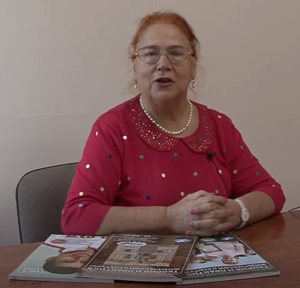Changes in regional blood flow of the lower limb during the period of early recovery after physical activity
ˑ:
Dr. Biol., Associate Professor A.V. Kabachkova1
Postgraduate student F. Syao1
Postgraduate student L. Tszyao1
Postgraduate student S.N. Kapitanov1
1National Research Tomsk State University, Tomsk
Objective of the study was to study the response of regional blood flow of the lower extremities in healthy men during the period of early recovery after physical exercise when the whole body is immersed in water.
Methods and structure of the study. 20 conditionally healthy volunteers of the first mature age (all men) took part in the scientific work. In addition to gender and age criteria, the following conditions for inclusion in the observation group were identified: height 170–180 cm, body mass index 20–24 kg/m2, average level of physical activity (3,000–4,000 MET-min/week). Exclusion criteria were chronic respiratory diseases, a history of acute illness within the last three months, smoking, regular water hardening (including winter swimming). Rheovasographic examination of the lower extremities was carried out using the Valenta hardware and software complex (Neo Company LLC, Russia).
Results and conclusions. The article presents the results of a study of the reaction of regional blood flow of the lower extremities in healthy men during the period of early recovery after physical activity when the whole body is immersed in water. It has been shown that being in comfortable conditions of an aquatic environment leads to a prolonged vascular response. At the stage of early recovery in both groups, the efficiency of the heart and vascular reactivity increase. Moreover, in the TWI group, a comfortable water environment significantly contributes to longer-lasting vasodilation. Thus, the use of complete immersion in a comfortable aquatic environment for passive recovery after intense physical activity is promising.
Keywords: rheovasography, healthy volunteers, comfortable temperature, fatigue, recovery.
Исследование выполнено при поддержке Программы развития Томского государственного университета («Приоритет-2030»).
References
- Kabachkova, A.V., Frolova, Yu.S., Kapilevich, L.V. (2014). Reaktsiya regionarnogo krovotoka nizhnikh konechnostey na step-ergometricheskuyu nagruzku u sportsmenov [Reaction of lower limb regional blood flow to step ergometric load in athletes]. Teoriya i praktika fizicheskoy kultury,10, 56-58. (In Russ.)
- Ahokas E.K., Ihalainen J.K., Kyrolainen H., Mero A.A. Effects of water immersion methods on postexercise recovery of physical and mental performance. Journal of strength and conditioning research. 2019. No. 33(6). pp. 1488-1495.
- Brenner J.S., Watson A. Overuse Injuries, Overtraining, and Burnout in Young Athletes. Pediatrics. 2024. No. 153(2).
- Higgins T.R., Greene D.A., Baker M.K. Effects of cold water immersion and contrast water therapy for recovery from team sport: a systematic review and meta-analysis. Journal of strength and conditioning research. 2017. No. 31(5). pp. 1443-1460.
- Kellmann M., Bertollo M., Bosquet L. et al. Recovery and performance in sport: consensus statement. International journal of sports physiology and performance. 2018. No. 13(2). pp. 240-245.
- Xiao F., Kabachkova A.V., Jiao L., Zhao H., Kapilevich L.V. Effects of cold water immersion after exercise on fatigue recovery and exercise performance-meta analysis. Frontiers in physiology. 2023. No. 14.



